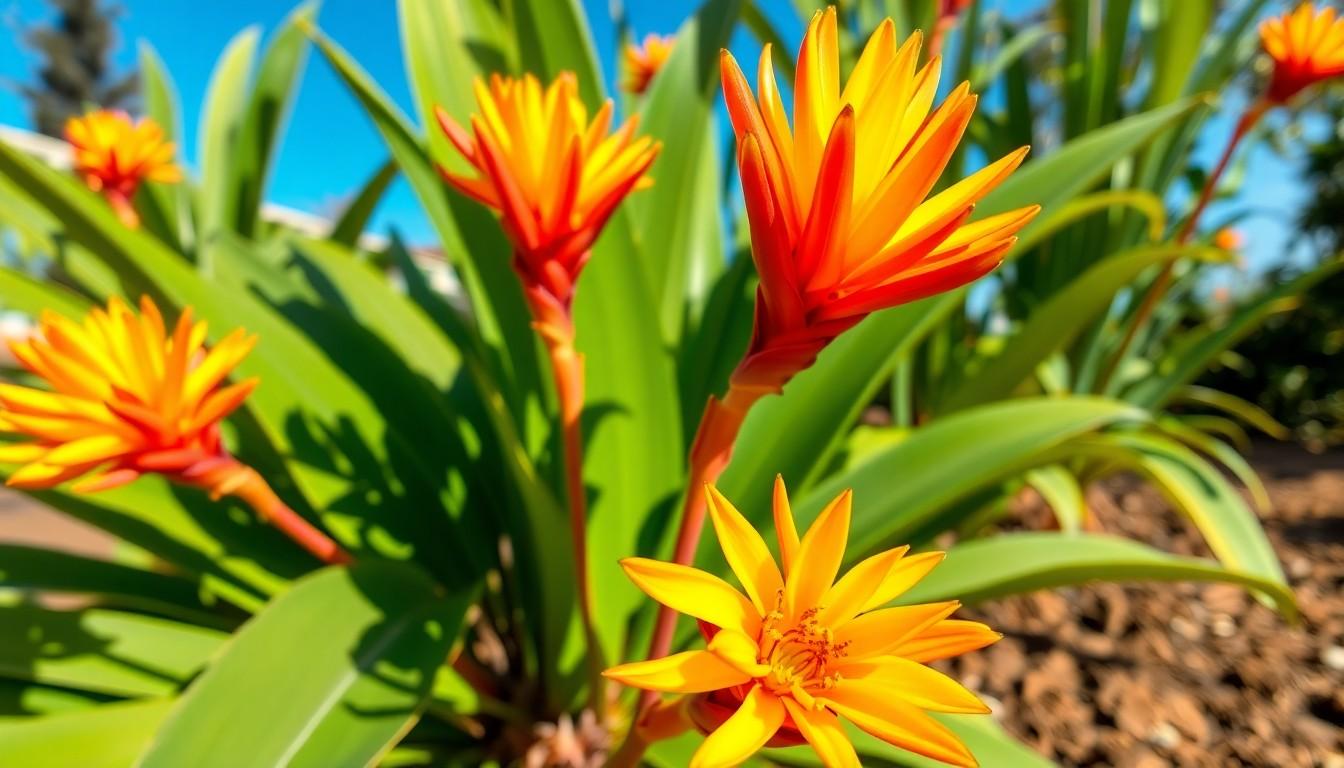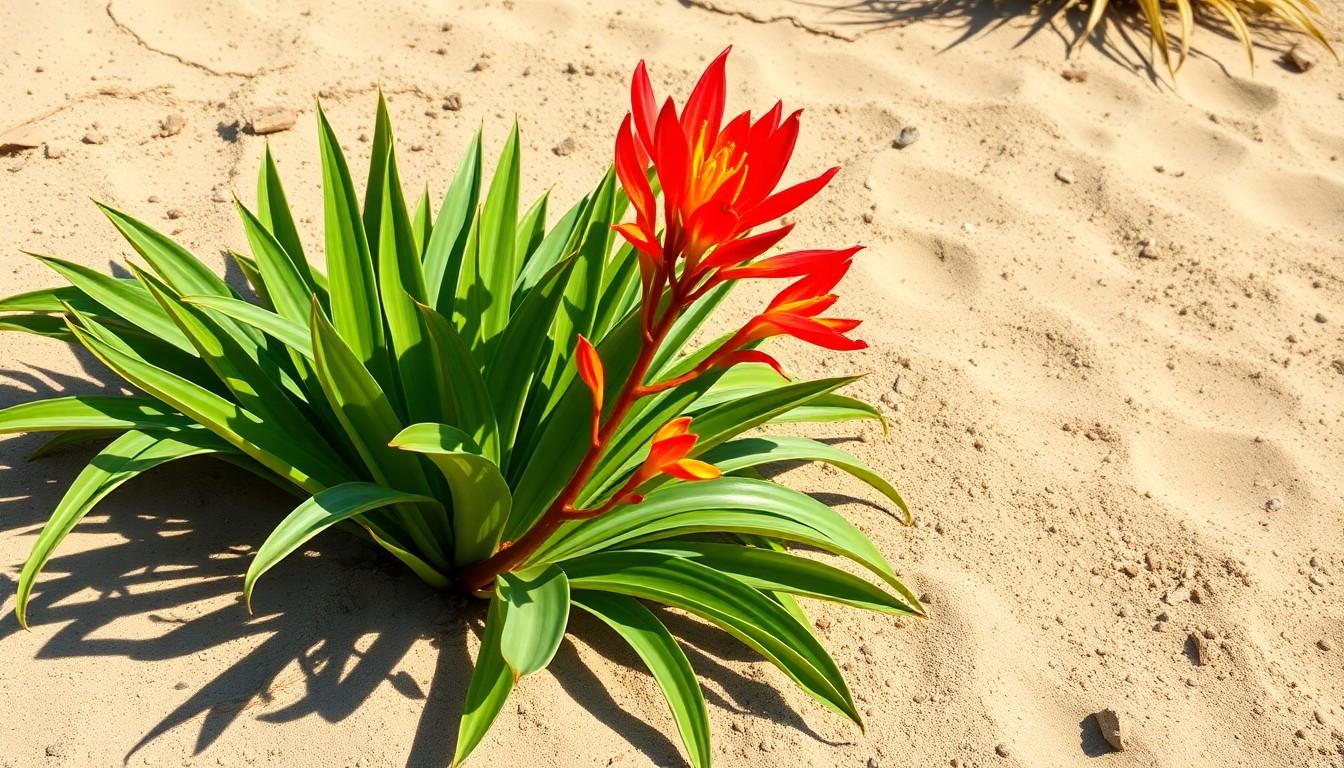Phone:
(701)814-6992
Physical address:
6296 Donnelly Plaza
Ratkeville, Bahamas.

If you’re looking to add a splash of color and a dash of personality to your garden, the kangaroo paw plant is your new best friend. With its unique, claw-like flowers and vibrant hues, this Australian native isn’t just a pretty face; it’s a low-maintenance superstar that thrives in sunny spots. But before you dive into the world of kangaroo paw, remember: even the most charming plants have their quirks!
Kangaroo paw plants, known for their unique flower shapes, resemble the paws of kangaroos. These stunning flowers bloom in various vibrant colors, including red, yellow, and green. Native to Australia, these plants thrive in warm, sunny environments, making them ideal for drought-resistant gardens.
Height varies, with some species reaching up to 4 feet tall. They feature long, arching leaves that can add texture and interest to garden landscapes. In addition to their beauty, kangaroo paw plants attract pollinators like bees and birds, enhancing garden biodiversity.
Soil preferences include well-drained types, rich in organic matter. Specific species, such as Anigozanthos flavidus and Anigozanthos manglesii, offer different sizes and flower types for greater diversity. Kangaroo paw plants flourish with regular watering during dry spells but should not be overwatered to prevent root rot.
Fertilization supports growth; applying a slow-release fertilizer in early spring encourages abundant blooms. Pests like aphids and snails may occasionally appear; addressing these issues soon maintains plant health. Regular pruning helps promote airflow and encourages bushier growth, ultimately enhancing the plant’s aesthetic appeal.
Growing kangaroo paws in pots offers flexibility for movement and display but requires attention to pot size and drainage. Overall, with proper care and consideration, these plants create striking focal points in outdoor spaces.

Kangaroo paw plants thrive under specific growing conditions that enhance their vibrant colors and health. Understanding these requirements helps ensure robust growth and stunning blooms.
Kangaroo paw plants flourish in full sunlight, needing at least 6 hours of direct sunlight daily. Bright light boosts their growth rate and flower production. Partial shade can lead to leggy growth and reduced flowering, adversely affecting overall health. Morning sun is beneficial as it dries dew quickly, reducing disease risks. In hotter climates, some afternoon shade helps prevent leaf scorch, ensuring plants remain healthy and vibrant.
Well-drained, sandy or loamy soil supports kangaroo paw plants excellently. They prefer organic-rich substrates that promote healthy root systems. Soil pH ranges from 6.0 to 7.0, providing optimal conditions for nutrient absorption. Avoid heavy clay or compacted soils, as they retain excess moisture, which can lead to root rot. Incorporating compost or aged mulch can enhance drainage and nutrients, supporting vigorous growth. Regular checks on soil moisture levels help maintain ideal conditions for flourishing plants.
Kangaroo paws thrive with proper watering and fertilization. These factors play a critical role in ensuring healthy growth and vibrant blooms.
Water kangaroo paws when the top inch of soil feels dry. During hot and dry conditions, aim for once a week to keep the moisture balanced. The root system prefers well-draining soil, so avoid puddling. Adjust frequency based on rainfall; supplemental watering may not be necessary during wet periods. Check soil moisture regularly to determine when it’s needed.
Use a slow-release fertilizer specifically designed for flowering plants in early spring. Apply following package instructions for dosage and frequency. This technique promotes robust blooming throughout the growing season. Organic options like compost can enhance soil nutrient content without risk of fertilizer burn. Ensure not to over-fertilize, as excessive nutrients can lead to lush foliage at the expense of flower production.
Maintaining kangaroo paw plants involves regular pruning to promote healthy growth and vibrant blooms. Understanding when and how to prune is crucial for their longevity and visual appeal.
Pruning kangaroo paws typically occurs in late winter or early spring before new growth begins. Cuts made at this time encourage bushier growth and improve airflow within the plant. Removing spent flowers throughout the blooming season enhances overall appearance while preventing seed formation. Regular trimming of older leaves also maintains vitality and prevents disease. It’s essential to monitor the plants and prune as needed throughout the year, especially after heavy flowering periods.
Using the right tools eases the pruning process and ensures clean cuts. Sharp pruning shears or scissors are ideal for cutting through stems without crushing them. A pair of gloves protects hands from irritants found on the plant’s leaves. Sterilizing tools before each use prevents the spread of diseases among plants. For larger, mature plants, consider using loppers for more substantial branches. Keeping tools in good condition prolongs their lifespan and effectiveness.
Kangaroo paw plants can face challenges from pests and diseases, which may hinder their growth. Identifying these issues quickly promotes healthy plants.
Aphids commonly attack kangaroo paws, showing up as tiny green or black insects on the leaves. Soft-bodied and sap-sucking, they weaken plants by feeding on their nutrients. Snails also pose a threat, leaving behind slimy trails and nibbling on leaves. Spider mites thrive in hot, dry conditions, creating fine webbing on leaf undersides. Thrips may appear as small, slender insects that cause discoloration and damage to flowers. Symptoms like yellowing leaves and stunted growth signal pest infestations. Regular monitoring helps catch these pests early.
Controlling aphid populations can involve treating affected plants with insecticidal soap or neem oil. Hand-picking snails often reduces their numbers effectively. Introducing beneficial insects, such as ladybugs, provides a natural solution for aphid management. For spider mites, increasing humidity around the plants can deter further infestation. Regularly inspecting kangaroo paws and applying plant-safe insecticides ensures the plants remain healthy. Quarantining new plants before introducing them keeps potential pests at bay. Keeping the garden clean of debris also minimizes hiding spots for these pests.
Kangaroo paw plants offer a vibrant addition to any garden with their unique flowers and low-maintenance requirements. By providing the right conditions such as ample sunlight and well-drained soil, these plants can thrive and enhance outdoor spaces. Regular watering and thoughtful fertilization are key to promoting healthy growth and stunning blooms.
Pruning and pest management further ensure the plant remains in top condition. With a little care and attention, kangaroo paws can flourish and attract pollinators, contributing to a dynamic and beautiful garden environment. Embracing their unique characteristics will lead to a rewarding gardening experience.